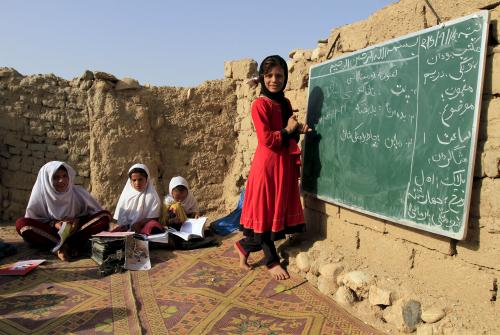Last year, Bangladesh made news. In a joint report, UNICEF and the World Health Organization reported that it had virtually eradicated open defecation. Meanwhile, in neighboring India, 40 percent of people still defecated in the open—in the villages a whopping 58 percent did. The ratio had come down from nearly two-thirds in 2000, but in 2015, about 525 million Indians were still not using toilets. Progress since then hasn’t been great: Take a look at this 2018 report, summarized in this article. India clearly has a lot to learn from Bangladesh, and it better learn quickly if Prime Minister Modi’s signature sanitation initiative “Swacch Bharat Abhiyaan” is to succeed.
But Bangladesh may also have something to learn from India. Since 2005, researchers at Duke University, the University of Colorado at Boulder, the University of California at Berkeley, and RTI International have been studying the take-up of toilets in Odisha, a state of about 46 million people close to Bangladesh. Their findings should worry policymakers in developing countries (and movie stars and concerned cricketers) because they point both to rapid adoption and abandonment of toilets.
It turns out that there are almost no serious assessments of the durability of sanitation interventions. The research summarized here—which is based on surveys of the same households in 2005, 2006, 2010, and 2016—aimed to address this problem.
The Experiment
The researchers worked with local organizations to evaluate the immediate and longer-term effects of a community-led total sanitation (CLTS) campaign in Odisha. The sample was 20 randomly selected villages—where the latrine program was intensively promoted—and another 20 villages that served as the control group. The average number of households per village was about 28, which added up to more than 1,000 households.
In early 2006, a social mobilization team worked with community organizations and government officials to implement the open defecation reduction program in the treatment villages. The campaign combined information and education, subsidized materials for making latrines, and communal shaming and sanctions for open defecation. Poor households paid about $6 for the installation of off-pit toilets; households with a monthly income above the poverty line of $7 per month paid the full cost, which was about $43 per latrine. Details of the study design are available here.
Research over the next decade focused on changes in toilet ownership, latrine conditions and use, attitudes, and child health. A survey was carried out about six months after the intervention (late 2006), and two follow-up surveys were conducted four and 10 years later. The enumerators—who were well trained and fluent in Oriya, the local language—managed to re-interview more than 96 percent of original households. Dickinson and others detail the 2006 assessment; Orgill and others synthesize all findings.
More precisely, the study estimated differences between the treatment and control villages in 2006, 2010, and 2016, in five qualitative and quantitative aspects:
- Share of households that ever-owned or ever-abandoned latrines since 2005
- Child nutritional health outcomes height-for-age, weight-for-age, and upper-arm circumference
- Self-reported latrine functionality and quality
- Self-reported use of latrines and open defecation
- Subjective perceptions of these practices and intention to reinvest in toilets
The Experience
Latrine ownership and adoption. By 2010, five years after the campaign began, half of the households in treatment villages had adopted latrines, compared with only a quarter in control villages. The subsidy helped—the increase among poor households was almost 40 percentage points higher than for households that did not get the subsidy (worth about $35). The share of households that had ever owned toilets continued to rise even after 2010, but there was no difference between treatment and control households. What was striking, though, is that while almost all the new latrines in 2006 were still in use in 2010, many had been abandoned by 2016—in somewhat equal measure by poor and non-poor households.
Figure 1: The CLTS campaign worked, but many of its effects seemed to wear off over time
 Latrine use and maintenance. Much like adoption, there was an initial increase in the use of latrines but a decade later, there were no discernible differences. Open defecation initially fell by 26 percent in treatment villages compared to control villages, but the difference had fallen to 7 percent by 2010 and it had disappeared by 2016. By 2016, latrines in treatment villages were more likely to have fallen into disrepair than those in control villages. The responses point to the infrequent use of latrines, not to the hassles associated with emptying the pit. Many villagers who used toilets continued open defecation as well.
Latrine use and maintenance. Much like adoption, there was an initial increase in the use of latrines but a decade later, there were no discernible differences. Open defecation initially fell by 26 percent in treatment villages compared to control villages, but the difference had fallen to 7 percent by 2010 and it had disappeared by 2016. By 2016, latrines in treatment villages were more likely to have fallen into disrepair than those in control villages. The responses point to the infrequent use of latrines, not to the hassles associated with emptying the pit. Many villagers who used toilets continued open defecation as well.
Perceptions and outcomes. Memory of the CLTS promotion faded quickly, and it was not followed up by initiatives to refresh memories. By 2010, people were also less likely to say that building a toilet was their idea. Like the other effects, all the child health outcomes improved initially, but the effects did not last beyond 2010.
What works, what doesn’t
Additional visits and work by the researchers provided clues on how to make these interventions stick. Some of them are common sense. More intense and repeated campaigns make the effects more durable, as did making the latrines better built and easier to maintain. Others are not as obvious. Highlighting the full range of benefits—not just child health—such as privacy and dignity led to more durable adoption, especially among women. Campaigns that targeted entire communities, rather than families, appear to have effects that are longer-lived. And creating organizations that made masons and material more readily available helped as well.
In many ways, the findings echo the experience with other investments in new infrastructure. For the changes to persist long enough to permanently alter hardened habits, these investments have to be accompanied by durable arrangements for maintenance, and periodic reminders of the human and financial costs of reverting to the practices of old. Countries like Bangladesh that have made rapid advances in water, sanitation, and health services should not take them for granted.
The Brookings Institution is committed to quality, independence, and impact.
We are supported by a diverse array of funders. In line with our values and policies, each Brookings publication represents the sole views of its author(s).








Commentary
What panel data tell us about toilets in India
September 20, 2018